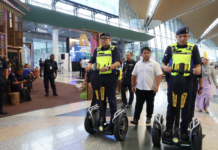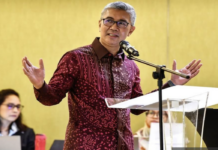KUALA LUMPUR, Nov 29 — With workplace clusters accounting for about a third of all clusters in Malaysia now, some health experts say there may be reason to review the current conditional movement control order (CMCO) and come up with different approaches.
Malaysia Medical Gazette managing editor Dr Khoo Yoong Khean said that there was a need to re-strategise to prevent the occurrence of workplace clusters which have spiked recently especially in the state of Selangor.
“Enforce employers to make better working and living conditions for them, as this is the root problem. Without fixing this, the infection can easily break out again.
“And lastly, start thinking about post-outbreak SOP like regular testing for workers,” said Dr Khoo when contacted by Malay Mail.
Dr Khoo said that apart from the CMCO, the government needs to focus on containment strategy in workplaces, giving examples like isolating patients or transferring them to hospitals or low-risk temporary placements like the MAEPS facility, and to test all workers and their close contacts.
“Epidemiologically speaking, there is a distinction between isolated clusters and community-wide infections. So logically the strategy to contain it will be different.
“If employers and the Health Ministry are able to enforce strict isolation or containment of affected workers within their dorms, then a CMCO on the community is technically not needed, as community cases can be controlled,” he suggested.
However, while he said a stricter MCO in today’s circumstances might be unnecessary given the economic toll, the situation might change within days.
“We need to remember even though epidemiologically workplace or dorm clusters are different, the case load is so high now that the chances of spillover infection to the community is also high.
“Also, regardless of who gets infected, all of us share the same healthcare resources. So bearing in mind these two caveats, there should be very high vigilance whether we need or a CMCO or otherwise. We need to respond fast to the changing conditions,” he said.
“I don’t think there is a need for statewide CMCO to contain workplace clusters, no,” he added, but conceding that spillovers from workplace infections into the community will be inevitable eventually.
Another public health expert who declined to be named said that the current CMCO and overall strategy employed by the government has arguably failed to curb the viral infection of Covid-19.
He said that the CMCO and subsequent temporary enhanced MCO (TEMCO), while in some cases understandable and successful to a certain extent, have also been contradictory, leading to the high number of Covid-19 cases across the nation.
“I believe many were made for political reasons at the behest of the politicians in power, and there is no consistency in the policies. A CMCO without curbing workplace movement has little benefits as evident from the continuous spike in cases across the board.
“While the CMCO was mooted to balance the lives and livelihood of the people, there was not enough enforcement or compulsion for employers to abide by strict SOPs or provide safe working and living conditions that would keep hundreds and thousands of people put into a cramped space from contracting the virus,” he said.
On the alternatives to a CMCO, he said instead of a general movement restriction, there should be a short period of complete lockdown but this must be coupled with a high quality mass testing of the community.
“Without mass testing, the point and benefit of a CMCO would be significantly reduced. Targeted testings have not shown to be effective in containing the pandemic,” he said.
He said that while it would be an economic burden on the people, it would be able to successfully give authorities better insight and control of the infection and provide better information as to the best direction and strategy to take.
“Currently, it’s spiraling out of control and the decisions made by the people in power are with their political agendas in mind,” he said.
However, other health experts like health systems and policies specialist Dr Khor Swee Kheng when contacted said that the CMCO has been marginally effective, and was necessary despite its obvious downside.
“Of course a CMCO can reduce the number of cases, but it comes at a very high cost to the economy, mental health and social cohesion.
“Therefore, the government must use the smallest possible geographical area for movement restrictions, such as TEMCOs which have been proven effective in Kedah, Perlis and Johor,” he said.
Meanwhile, respiratory consultant Dr Helmy Haja Mydin said that the CMCO would have been effective if everyone, including those in workplaces had adhered to the SOPs in place.
“Any lockdown must balance public health requirements with economic impact, and should be based on up-to-date data. As a general rule, we should minimise the geographical areas affected whilst being cognisant of travel habits of the people living within such areas,” he said.
It was recently reported that out of the cumulative 334 Covid-19 clusters detected in Malaysia, more than a third, or 119 clusters are related to infections at workplaces.
Health Director-General Tan Sri Dr Noor Hisham Abdullah had said of the 119 clusters linked to workplaces, 83 are still active while 36 have ended.
As of November 24, a total of 77,201 individuals were screened, and 12,079 were found to be Covid-19 positive. Of this, 4,398 were Malaysians and 7,681 foreigners. Malaysia has a total of 59,817 Covid 19 cases.
He said the five workplace-linked clusters that have the highest number of cases are the Teratai cluster (4,036 cases), Damanlela Construction Site cluster (1,539), Cergas cluster (1,337), Hentian cluster (1,101) and Kaya cluster (900). (Malaymail)



















